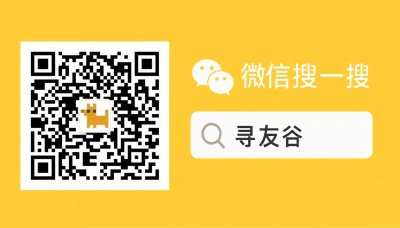Why this matters: QR scanning is the little trick that runs your life in China
Last month at a visa orientation near Nanjing University, a group of American students stared at a café cashier like it was a spaceship. Nobody wanted to be the foreigner fumbling for cash — WeChat QR is the default. If you’re a United States person living in China (or heading here to study), scanning a QR code with WeChat isn’t an optional life skill — it’s basic survival: joining class groups, paying for dinner, proving identity for services, or opening bank/payment flows. Get it wrong and you’ll be that person: awkward, slow, and possibly overcharged.
On top of everyday friction, international mobility and payment systems are changing fast. Governments and businesses push new QR payment links across borders; China already experiments with palm and facial payment tech, and retailers increasingly accept cross-border QR solutions for tourists and students. That trend shows you can expect more QR interactions — not fewer — the longer you stay in Greater China and Asia more broadly [Travel and Tour World, 2025-11-05]. Meanwhile, visa, migration, and student-administration processes keep players moving across countries — meaning you’ll scan QR codes for enrolment, registration, or visa briefings as well [The Thaiger, 2025-11-05].
This guide strips the mystery: how to scan every QR type in WeChat, what settings matter, real-world gotchas for foreigners (IDs, payment, and groups), and a checklist so you stop feeling like a tourist and start moving like a resident.
The basics: types of QR codes and what each one does in WeChat
WeChat uses QR codes for four common things you’ll meet:
- Contact QR codes — add friends or follow official accounts.
- Group QR codes — join class groups, dorm groups, or interest groups.
- Payment QR codes — pay shops, split bills, or receive money.
- Mini-program & login QR codes — open services (tickets, campus cards) or log into web apps.
How they behave differs:
- Adding contacts: shows name/avatar; one tap to add.
- Groups: often expire after a set time or require admin approval; campus groups may use university WeChat flows.
- Payments: may require a linked Chinese bank card or an international payment gateway depending on the merchant and whether cross-border QR linking is enabled [Travel and Tour World, 2025-11-05].
- Logins & mini-programs: scanning a merchant or school login QR can open a mini-program that needs identity verification.
If you’ve got an international phone number and a foreign bank card, some QR payment flows will ask for extra steps or decline. Cross-border QR linking is evolving, so don’t assume every store takes foreign accounts yet [Google News / Business Standard, 2025-11-05].
Step-by-step: how to scan a QR code in WeChat (with troubleshooting)
Follow this—practice once and it becomes second nature.
- Open WeChat
- Tap the WeChat icon. If you use a phone with multiple language settings, keep WeChat updated from your app store (iOS App Store / Android APK stores).
- Choose Scan
- From the main screen: Tap the “Discover” tab (发现) → “Scan” (扫一扫).
- Or long-press the WeChat icon on iOS for a quick “Scan QR Code” shortcut.
- Align and scan
- Hold your phone steady. Center the QR code inside the square guide.
- Good lighting helps; reflective plastic or curved surfaces can break recognition.
- Follow on-screen prompts
- Contact/group: Tap to add or join. Some groups ask for a short text message to verify.
- Payment: It will ask to confirm amount or open a payment confirmation screen.
- Mini-program/login: It will open the mini-program or ask to log in.
- If it fails
- Try “Album” option inside Scan to use a saved screenshot of the code.
- Clean your camera lens, move closer/further, or rotate the code if it’s on a curved screen.
- If merchant QR is offline, use merchant’s WeChat official account or ask to show a different code.
Troubleshooting specific foreigner issues:
- Payment declined: You may need to link a Chinese bank card to WeChat Pay. Some merchants accept cross-border QR payment flows, but availability varies by region and merchant type [Travel and Tour World, 2025-11-05].
- Account restrictions: If WeChat requests identity verification, you might need a passport photo and phone number verification. For student visa processes, keep digital copies of admission letters or visa documents accessible — some schools or consulates provide QR-based forms for check-in and verification [The Thaiger, 2025-11-05].
Real-life scenarios and smart hacks
Here are common campus and city situations and what you should do.
- Joining class groups: Professors or TAs often publish a group QR on the LMS. Scan quickly and pin the group. If the group QR expires, message the instructor for a fresh link.
- Buying food: For street stalls, vendors show a static QR. If payment doesn’t work, try asking the vendor to switch to their own phone (sometimes merchant limits block foreign accounts).
- Entering buildings: Universities or libraries may use mini-program QR gates. Make sure your WeChat has the right mini-program installed and allow camera access.
- Sharing your QR: Use WeChat’s “My QR Code” under Profile → tap it and save it to your album. That’s faster than typing phone numbers.
- Offline backup: Keep screenshots of critical QR codes (campus registration, dorm entry) in a secure folder. Use device encryption or WeChat’s “My Favorites” for private storage.
Cultural note: People in China are used to quick scans and expect a smooth flow. Move with confidence — practice the scan in low-stress situations (ordering coffee, joining a club) before you need it for something important like a visa office check-in.
🙋 Frequently Asked Questions (FAQ)
Q1: My WeChat scan shows “Payment not available” — what steps should I follow?
A1:
- Check WeChat Pay setup: Me → Wallet → Add Bank Card. If you don’t have a Chinese bank card:
- Option A: Use a prepaid Chinese bank card or an Alipay/WeChat cross-border card where available.
- Option B: Ask the merchant if they accept international QR links (new cross-border QR links are rolling out across Asia) [Travel and Tour World, 2025-11-05].
- Try alternative payment: Cash, bank transfer, or have a Chinese friend pay and transfer money back.
- If blocked for identity reasons: Follow on-screen requests to verify your identity (passport picture, phone verification). If You hit an account restriction, visit WeChat Support or your campus international student office.
Q2: How do I scan a QR code from my phone screen (screenshot or PDF)?
A2:
- Open WeChat → Discover → Scan → choose “Album” (相册) inside Scan. Select the screenshot or image. WeChat will parse the QR in the image.
- If it doesn’t detect: crop tightly around the QR, increase contrast, or open the image on another device and scan directly.
- For secure documents (visa appointment QR), save the image in “My Favorites” in WeChat for quick access in offline environments.
Q3: I’m asked to scan a QR code for a government or visa step. Is using WeChat safe/legal?
A3:
- For many student or consular flows, institutions use QR-based check-ins or appointment confirmations. Confirm with the issuing authority (university international office or consulate) that the QR source is legitimate.
- Steps to be safe:
- Verify sender: If the QR came by email, check the official domain and cross-link with your university’s website.
- Keep originals: Save admissions, visa appointments, and official correspondences in multiple locations (email + WeChat + cloud).
- When in doubt, call the official phone number listed on the institution’s website.
- Note: Immigration and consular rules change; always refer to the official channels for binding advice (e.g., embassy/consulate websites). This guide is informational only.
🧩 Conclusion
For United States people and students in China, mastering WeChat QR is like learning to jaywalk without getting hit — necessary, quick, and life-improving. Once you can scan, join, and troubleshoot QR codes confidently, your day-to-day becomes smoother: food, friends, classes, and campus services all move faster.
Quick checklist:
- Practice scanning in a cafe: open Discover → Scan and try a friend’s QR.
- Set up WeChat Pay or have a backup (cash/prepaid) if you lack a Chinese bank card.
- Save important QR codes (visa, campus, dorm) to WeChat Favorites and as screenshots.
- Verify any official QR with the issuing institution before relying on it for visas or legal steps.
📣 How to Join the Group
XunYouGu’s WeChat community is full of Americans and international students swapping real tips — everything from the best cheap noodles near your campus to how to handle blocked payments. To join: open WeChat → Search “xunyougu” in Official Accounts → follow the account → message the assistant (we’ll ask a few quick questions to place you in the right country group). If you prefer, save our assistant’s QR and scan it to request group entry.
📚 Further Reading
🔸 New QR Payment Link Between Thailand and China Set to Boost Tourism and Trade
🗞️ Source: Travel and Tour World – 📅 2025-11-05
🔗 Read Full Article
🔸 A step by step guide to getting the Thai Student Visa (Non-Immigrant ED)
🗞️ Source: The Thaiger – 📅 2025-11-05
🔗 Read Full Article
🔸 Canada plans visa cancellations for Indians: What applicants can do now
🗞️ Source: Google News / Business Standard – 📅 2025-11-05
🔗 Read Full Article
📌 Disclaimer
This article is based on public information, compiled and refined with the help of an AI assistant. It does not constitute legal, investment, immigration, or study-abroad advice. Please refer to official channels for final confirmation. If any inappropriate content was generated, it’s entirely the AI’s fault 😅 — please contact me for corrections.

